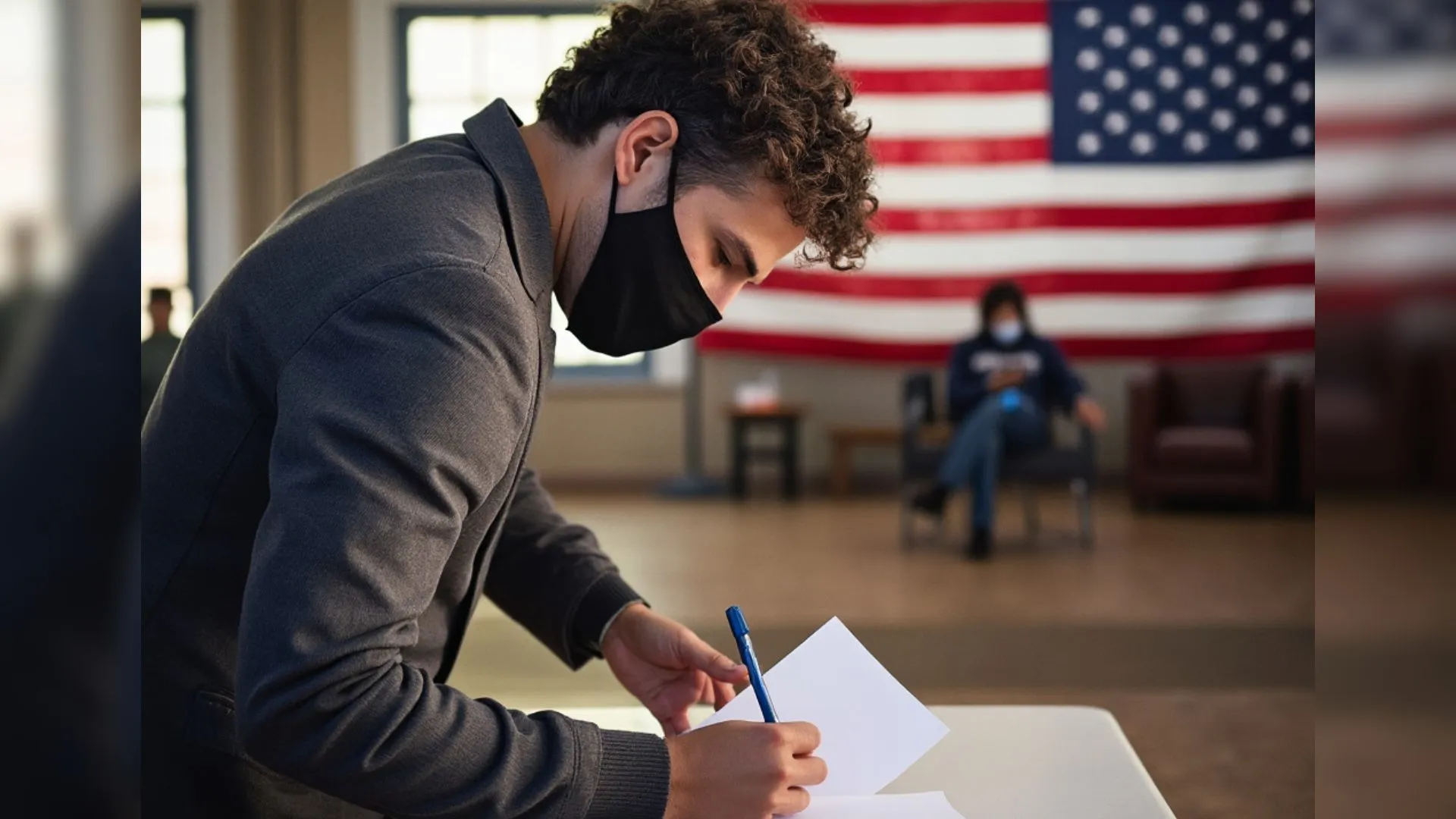
How to Vote in the United States
Voting is a cornerstone of democracy, allowing citizens to shape their government and influence policies. In the United States, voting regulations and processes can vary significantly between states, but this guide will provide a comprehensive overview of how to vote in federal, state, and local elections.

How to Vote in the United States : A Step-by-Step Guide
- Understanding Voting Eligibility
To vote in the U.S., you must meet the following basic criteria:
- Be a U.S. Citizen: Only U.S. citizens are eligible to vote in federal elections. Non-citizens, including legal residents, are not allowed to vote.
- Meet Age Requirements: You must be at least 18 years old on or before Election Day.
- Residency Requirements: You must meet the residency requirements of your state.
- Not Disqualified by Criminal Record: Rules around voting rights for individuals with felony convictions vary by state. Some states automatically restore voting rights upon release from prison, while others may have additional conditions.
- Each state may have additional specific requirements, so it’s wise to check with your state’s election office for precise information.

- Registering to Vote
Registering to vote is the first official step. Every state (except North Dakota) requires eligible voters to register. Here’s a breakdown of the process:
a. Check Your Registration Status
If you’ve voted before or think you may already be registered, you can confirm your registration status on the USA.gov website or by visiting your state’s election website.
b. Register to Vote
If you’re not registered, you can typically register:
- Online: Many states offer online registration, which is simple and quick. You’ll need a valid driver’s license, state ID, or other identifying information.
- By Mail: You can download a national voter registration form from the U.S. Election Assistance Commission and mail it to your state’s election office.
- In Person: You can register in person at your local election office, DMV, or other government offices designated by your state.
- c. Deadlines
- Voter registration deadlines vary by state, typically ranging from 15 to 30 days before Election Day. Some states offer same-day registration, allowing you to register and vote on the same day during early voting or on Election Day.
- Decide on Your Voting Method
Once registered, you have several voting options:
a. Voting in Person on Election Day
Voting in person on Election Day is traditional and can be done at your designated polling place. You’ll need to:
- Locate Your Polling Place: Use resources like the USA.gov polling place locator or your state’s election website.
- Review Polling Hours: Polling hours vary by state, typically opening around 7:00 am and closing at 8:00 pm. Some states require that you be allowed to vote if you’re in line when polls close.
- b. Early In-Person Voting
- Most states allow early voting, typically starting two to three weeks before Election Day. This option offers flexibility for those who may not be available on Election Day. Check your state’s early voting sites and hours, as they may differ from Election Day polling places.
c. Voting by Mail (Absentee Voting)
Mail-in voting, also known as absentee voting, allows you to vote remotely. In some states, any voter can request a mail-in ballot, while others require an excuse, such as illness, travel, or military service. Here’s how it works:
- Request a Mail-in Ballot: You can request a mail-in ballot through your state’s election office. Some states send mail-in ballots to all registered voters automatically.
- Complete and Return the Ballot: Fill out the ballot as instructed and return it by mail or drop it off at a designated ballot drop box or election office.
- Observe Deadlines: Mail-in ballots must be received (or, in some states, postmarked) by a certain deadline, usually on or before Election Day.
- Prepare to Vote
a. Research Candidates and Issues
Do your homework on the candidates, ballot measures, and referendums. Various nonpartisan resources, like Ballotpedia, offer sample ballots and information on issues.

b. Know What ID is Required
Voter ID requirements vary by state. Some states have strict photo ID requirements, while others accept a range of documents or do not require ID at all. Examples of acceptable IDs can include:
- Driver’s license
- State-issued photo ID
- U.S. passport
- Military ID If you’re unsure, contact your state’s election office or check online for specific ID requirements.
- c. Know Your Rights as a Voter
- If you’re registered and eligible, you have the right to vote. Laws vary, but generally:
- Provisional Ballots: If there’s an issue with your registration or ID, you can request a provisional ballot, which will be counted after eligibility is verified.
- Assistance for Disabilities: Polling places are required to be accessible, and you’re entitled to help if you have a disability.
- Language Assistance: Some areas provide ballots and election materials in multiple languages.
- Voting on Election Day
Here’s what to expect at the polls:
- Check In: When you arrive, you’ll check in with a poll worker. You may need to show ID if required by your state.
- Receive Your Ballot: The poll worker will provide a ballot and direct you to a voting booth.
- Mark Your Ballot: Follow the instructions carefully. If you make a mistake, you can request a replacement ballot.
- Cast Your Vote: Once you’ve completed your ballot, you’ll either insert it into a machine or place it in a secured ballot box. Poll workers are available to assist with any questions.
- Voting by Mail (Step-by-Step)
For those choosing to vote by mail, here’s a detailed process:
a. Fill Out the Ballot
Read the instructions carefully and use the correct pen color (usually black or blue). Complete the ballot without over-voting (selecting more candidates than allowed for a given position).
b. Prepare the Ballot for Submission
Place the completed ballot in the envelope provided and seal it. Some states require that you sign the envelope or provide other information to verify your identity.

c. Return Your Ballot
You can either mail the ballot back (ensure it’s postmarked by the deadline) or drop it off at an authorized location. Be cautious of unofficial drop boxes.
- Confirming Your Vote
After voting, some states allow you to track your ballot online. This tracking helps you confirm that your mail-in ballot has been received and accepted. You can find tracking services on your state’s election website. - Avoiding Common Voting Mistakes
Double-check deadlines: Missing a deadline can result in your ballot not being counted.
Bring the correct ID: Familiarize yourself with your state’s ID laws.
Use authorized resources: Be aware of misinformation, especially on social media. Only trust reputable, official sources. - Staying Informed Post-Election
Many ballots include local issues, referendums, and measures, so understanding election results can help you stay engaged in your community. Watching election coverage from trusted news outlets and checking local election websites are good ways to stay informed.




